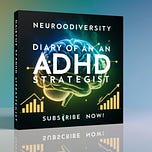Struggling to Focus in a Distracted World
Alex stared at his homework, the words swimming on the page as his thoughts darted from one topic to another. His teacher had suggested he might have ADHD, joining the growing chorus of concerned adults in his life.
His parents wondered: Was their energetic 9-year-old truly experiencing a neurodevelopmental disorder, or was he simply a typical child struggling with increasing academic demands in an age of constant stimulation?
This question represents a broader dilemma facing millions of families.
Across America, ADHD diagnoses have skyrocketed, with approximately 7 million children (11.4% of all kids) currently diagnosed—an increase of one million since 2016. Adult diagnoses are similarly surging, with around 15.5 million adults (6% of the adult population) now identified with the condition as well.
But behind these statistics lies a complex debate: Are we getting better at recognizing a legitimate neurodevelopmental condition, or are we pathologizing normal variations in human behavior and attention?
The question of ADHD overdiagnosis has become increasingly relevant as diagnoses continue rising.
Breaking It Down: What Is ADHD Overdiagnosis?
ADHD overdiagnosis refers to the identification of Attention-Deficit/Hyperactivity Disorder in individuals who don't truly have the condition, but instead exhibit behaviors that might better be explained by other factors.
This can occur through various mechanisms: diagnostic criteria may be too broad, assessment tools may lack specificity, clinicians may not adhere to rigorous diagnostic standards, or behaviors related to other conditions might be misattributed to ADHD.
At its core, overdiagnosis represents a mismatch between the true neurobiological condition and its clinical identification, potentially leading to unnecessary medication, stigmatization, and missed opportunities to address the real underlying issues.
Why This Matters
The potential overdiagnosis of ADHD isn't merely an academic concern—it affects real lives in profound ways.
When children or adults receive an inappropriate ADHD diagnosis, they may be prescribed stimulant medications they don't need, exposing them to unnecessary side effects such as appetite suppression, sleep disturbances, and potential impacts on cardiovascular health parameters.
Beyond medication concerns, an incorrect label can significantly impact a person's self-perception and identity.
Children might internalize the idea that there's something "wrong" with their brain when they may simply have a different learning style or be responding to environmental stressors or circumstances.
For society, overdiagnosis strains healthcare resources, potentially diverts attention from individuals with genuine ADHD who need support, and risks medicalizing behaviors that might previously have been considered within the normal spectrum of human attention and activity.
The Science Behind It
Research examining ADHD diagnostic trends reveals several patterns worth consideration.
A systematic review published in medical journals documented that ADHD prevalence in children rose from approximately 6% in the 1990s to over 10% by 2016, with recent CDC data confirming this upward trajectory to 11.4% by 2022.
These increases correlate with several changes in diagnostic approaches.
The Diagnostic and Statistical Manual of Mental Disorders (DSM-5) broadened criteria by raising the age of symptom onset from 7 to 12 years and reducing the number of symptoms required for diagnosis in adults from six to five, making more individuals eligible for the formal diagnosis.
Neuroscience research has established that ADHD does involve differences in brain structure and function, particularly in regions managing executive function, reward processing, and attention.
However, no definitive biological markers exist for clinical diagnosis, meaning that assessment remains largely dependent on subjective behavioral observations and reports.
Multiple studies suggest that diagnostic tools have limitations, with many common ADHD screening instruments failing to reach the ideal 80% sensitivity and specificity rates.
This creates the potential for both false positives (incorrectly identifying someone as having ADHD) and false negatives (missing ADHD in someone who actually has it).
Making It Work: How to Apply This in Real Life
✅ Step 1: Recognize Red Flags –
Be aware of potential signs of overdiagnosis, such as quick diagnoses without comprehensive evaluation, ignoring alternative explanations, or pressure to medicate without exploring behavioral interventions and supports.
✅ Step 2: Seek Thorough Assessment –
Insist on comprehensive evaluation from qualified professionals that includes information gathering from multiple sources (home, school, work) and explores potential alternative explanations for symptoms.
✅ Step 3: Consider The Context –
Understand how environmental factors, including educational demands, parenting styles, and cultural norms, can influence attention and behavior without necessarily indicating a neurodevelopmental disorder present.
✅ Step 4: Explore Non-Medication Approaches –
Investigate evidence-based behavioral interventions, environmental modifications, and skill-building strategies before or alongside any medication-based treatments considered.
✅ Step 5: Maintain a Critical Perspective –
Remember that diagnostic categories evolve over time and are influenced by sociocultural factors as well as scientific understanding continually advancing.
Real-Life Examples in Action
Case Study 1: The Mislabeled Child
Seven-year-old Jordan was struggling in school, unable to sit still or complete assignments. His pediatrician quickly diagnosed ADHD and prescribed medication.
However, when his parents sought a second opinion, a comprehensive evaluation revealed significant anxiety stemming from his parents' recent divorce and a learning disability that made reading frustrating.
With appropriate therapy and educational accommodations, Jordan's behavior improved substantially without ADHD medication becoming necessary ultimately.
Case Study 2: The Academic Pressure Cooker
Emma, age 12, was once an enthusiastic student but began having trouble concentrating in middle school.
Her parents worried about ADHD, but a careful assessment revealed she was now juggling multiple advanced classes with extracurricular activities and social pressures.
When her schedule was modified and stress management techniques introduced, her attention difficulties significantly improved within months successfully.
Case Study 3: The Adult Misdiagnosis
Michael, 32, sought help for focus problems affecting his work performance. He received a quick ADHD diagnosis based on a brief questionnaire.
When medication proved ineffective, further evaluation uncovered untreated sleep apnea and depression as the true culprits.
Addressing these conditions resolved his cognitive difficulties more effectively altogether.
Pro Tips & Insider Insights
Look Beyond Behavior: Similar symptoms can have different causes—what looks like inattention might actually be anxiety, depression, learning disabilities, or even medical issues like thyroid problems or sleep disorders manifesting.
Consider Developmental Timing: Children develop executive function skills at different rates. A "late bloomer" doesn't necessarily have ADHD; their brain may need more time to develop attention and regulation capabilities naturally.
Question "Normal": Our educational system increasingly demands sustained focus and impulse control at earlier ages. Consider whether expectations are age-appropriate before pathologizing a child's active, energetic nature.
Examine Cultural Context: ADHD is diagnosed at significantly different rates across cultures and countries. This suggests diagnostic practices may be influenced by cultural values around attention, activity, and behavioral expectations worldwide.
Investigate Environmental Factors: Screen time, sleep deprivation, lack of physical activity, and poor nutrition can all produce ADHD-like symptoms that might respond better to lifestyle changes than to psychiatric intervention alone.
Quick Cheat Sheet (Summary of Key Takeaways)
🔹 ADHD diagnosis rates have increased dramatically over recent decades, raising concerns about potential overdiagnosis in both children and adults.
🔹 No definitive biological markers exist for ADHD; diagnosis relies on subjective behavioral assessments that may not always distinguish between ADHD and other conditions or circumstances.
🔹 Changes to diagnostic criteria have broadened eligibility, potentially capturing individuals with milder symptoms or different underlying issues entirely present.
🔹 Societal factors, including increased academic pressure and expectations for early self-regulation, may contribute to higher rates of behaviors labeled pathological.
🔹 A comprehensive, multi-informant assessment approach is essential to ensure accurate diagnosis and appropriate treatment planning outcomes.
Further Reading (Books & Resources)
📖 The ADHD Explosion: Myths, Medication, Money, and Today's Push for Performance – A research-based examination of rising ADHD rates and contributing factors.
📖 ADHD: What Everyone Needs to Know – A balanced overview of ADHD research, diagnosis, and treatment by leading experts.
📖 The Myth of the ADHD Child: 101 Ways to Improve Your Child's Behavior and Attention Span Without Drugs, Labels, or Coercion – Alternative perspectives and interventions for attention and behavior challenges.
Practical Tools & Apps
🔧 Calm – Meditation and mindfulness app that can help improve attention and reduce impulsivity without medication.
🔧 Focus@Will – Music scientifically designed to improve concentration and reduce distractibility.
🔧 Forest – An app that helps users manage screen time and improve focus through gamification.
Research & Studies Section
Increasing Prevalence: CDC data shows ADHD prevalence in children aged 3-17 rose from about 6% in the 1990s to 11.4% by 2022. (CDC, 2022)
Diagnostic Criteria Evolution: DSM-5 raised the age of symptom onset from 7 to 12 years, potentially increasing eligible diagnoses. (APA, 2013)
Academic Pressure: Research has found a correlation between rising academic demands on young children and increased ADHD diagnoses. (Hinshaw & Scheffler, 2014)
Diagnostic Accuracy: Many ADHD screening tools fall below the optimal 80% sensitivity and specificity threshold. (AACAP Practice Parameters, 2022)
Cultural Variations: Cross-cultural studies show significant differences in ADHD prevalence rates between countries, suggesting cultural factors influence diagnosis. (Faraone et al., 2021)
Call-to-Action & External Link
Understanding ADHD diagnosis requires critical thinking and comprehensive assessment. Whether you're concerned about yourself or a loved one, advocate for thorough evaluation that considers all potential explanations for attention and behavior challenges. Question quick diagnoses and seek multiple perspectives before accepting a label that may influence treatment and identity.
🎧 For more insights, check out this ADHD podcast:













Share this post